Do you think Paris is best experienced in the summertime or Christmas season? Think again! The French capital is a perfect complement to the changing seasons, so you are guaranteed a wonderful trip no matter what time of year you visit. Here are some of our favorite annual events to guide your itinerary in the City of Lights!
International Agricultural Show
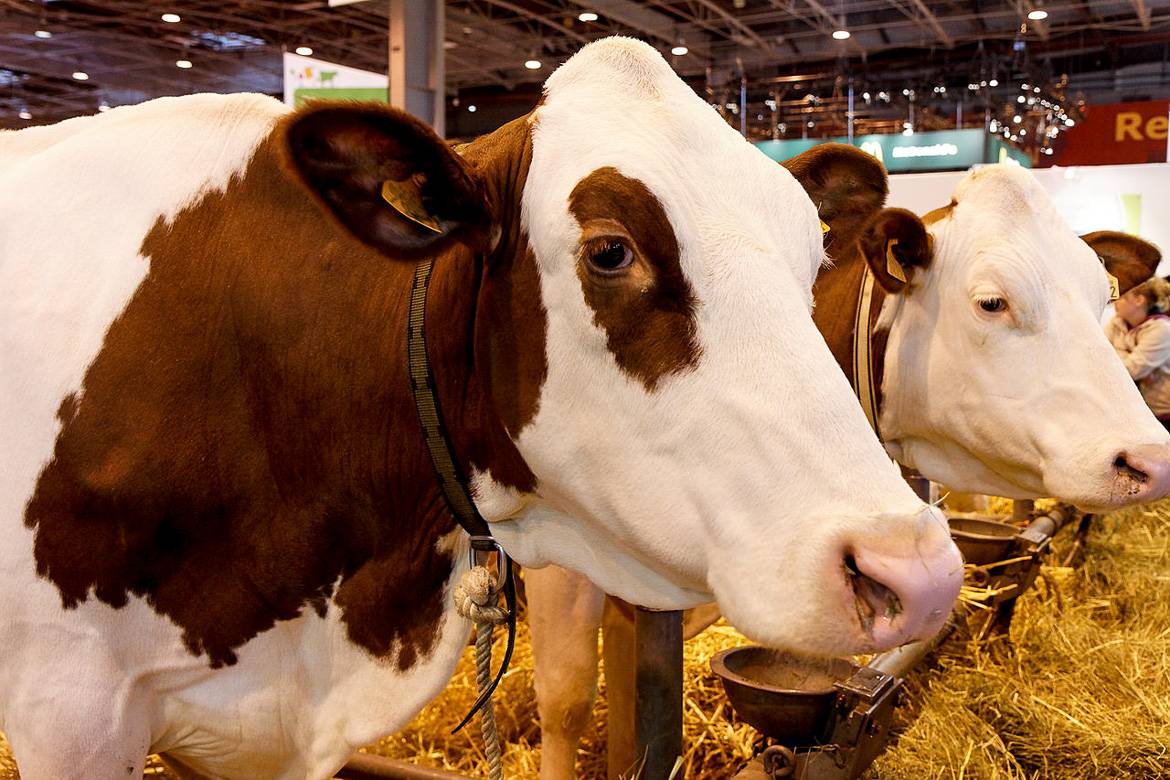
It’s the largest week-long farm tour you’ll ever experience! Since its origins as the General Agricultural Competition in 1870, the International Agricultural Show has grown to not only showcase France’s livestock, but the best regional, dairy, organic, and wine products from dozens of countries. Four separate sections make up the exhibition: horses, sheep, cows, dogs, cats, and other farm animals; gastronomic delights such as produce and wine; gardens of crops and greenery; and professional discussions on the ever-changing business of agriculture.
In order to accommodate its extensive display, the International Agricultural Show moved to the Porte de Versailles Exhibition Centre and has remained there since 1925. In accordance with the approach of spring, the fair is generally held over the last week of February from 9:00 a.m. to 7:00 p.m daily. Access to the venue is easy via public transportation; the Metro, tramway, or bus will get you there! Tickets cost 13€ for adults, 6€ for students and children between the ages of 6 and 12 years old, 9€ for people with disabilities, and free for children under the age of 6. While you’re there, snap a photo with the expo’s current animal ambassador!
Paris Carnival
The Paris Carnival is France’s equivalent to New Orleans’s Mardi Gras and Rio de Janeiro’s Carnaval. Locals celebrate this Parisian tradition in the streets. The Paris Carnival dates back hundreds of years, when it lasted from January 7th until the beginning of Lent. The festival traditionally united all social classes during its month-long celebrations, with upper-class events like regal balls and working-class parades.
Today the Paris Carnival is one day only, typically the Sunday before Mardi Gras. Revelers arrive in droves in colorful costumes and in many cases, masquerade masks. The event is free whether you are participating or spectating. The route and the theme are subject to change, so check the official website in advance for full details!
Paris Marathon
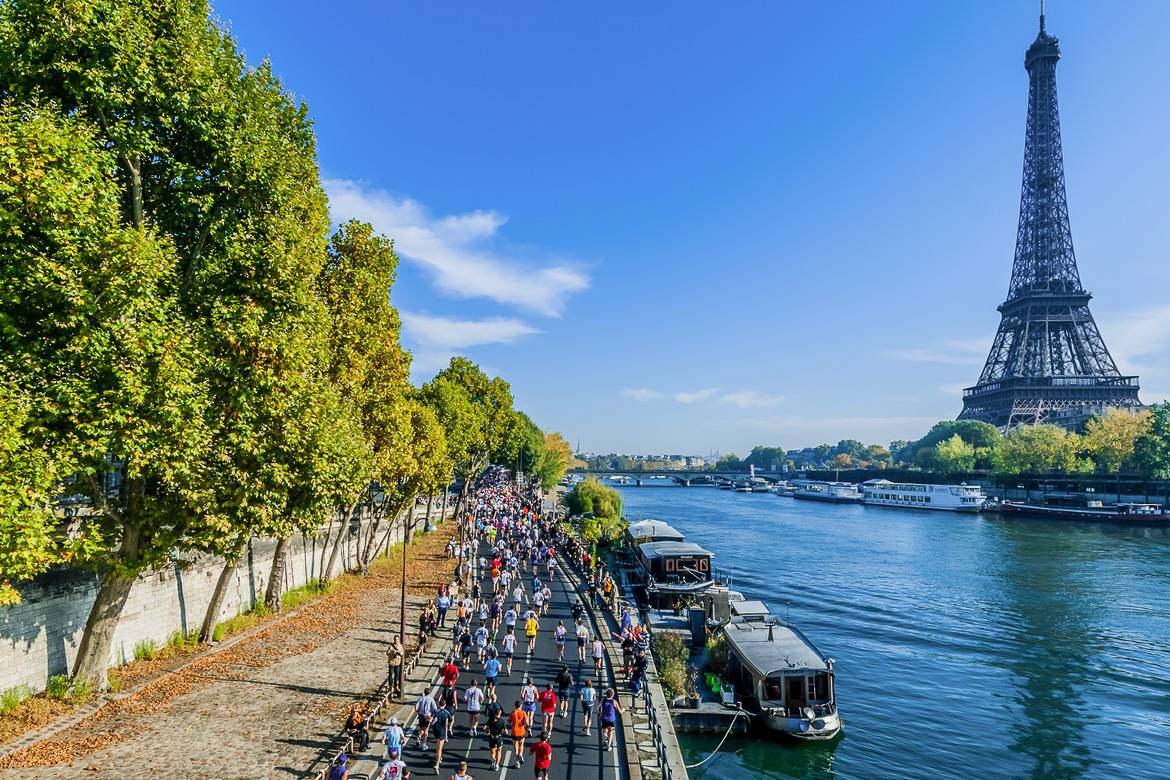
The Paris Marathon ranks with New York and London for its popularity. Thousands of runners representing hundreds of nations will compete for the title across 26 miles and 385 yards. It’s a bit of a workout to be sure, but the route is unparalleled: the race begins along the Champs-Élysées, passes the Seine River, goes through the Bois de Boulogne, and finishes on the Avenue Foch. Runners will zoom past scenic views of iconic Parisian landmarks like the Eiffel Tower, the Arc de Triomphe, and Notre-Dame Cathedral (see other notable attractions in Paris here).
The Paris Marathon takes advantage of the spring weather and is typically held on a Sunday in April. Registration is required in order to participate. Considering the marathon’s huge numbers, space is limited. Sign up as early as possible when pre-registration begins in September. It costs about 55€ to enter the race, and prices increase beginning in October. A doctor’s clearance (within a year of the marathon’s date and not a day over) is mandatory for participation, and runners are organized into starting times according to their jogging ability. More options–such as representing an organization or running in the disabled race–are available.
Foire du Trône
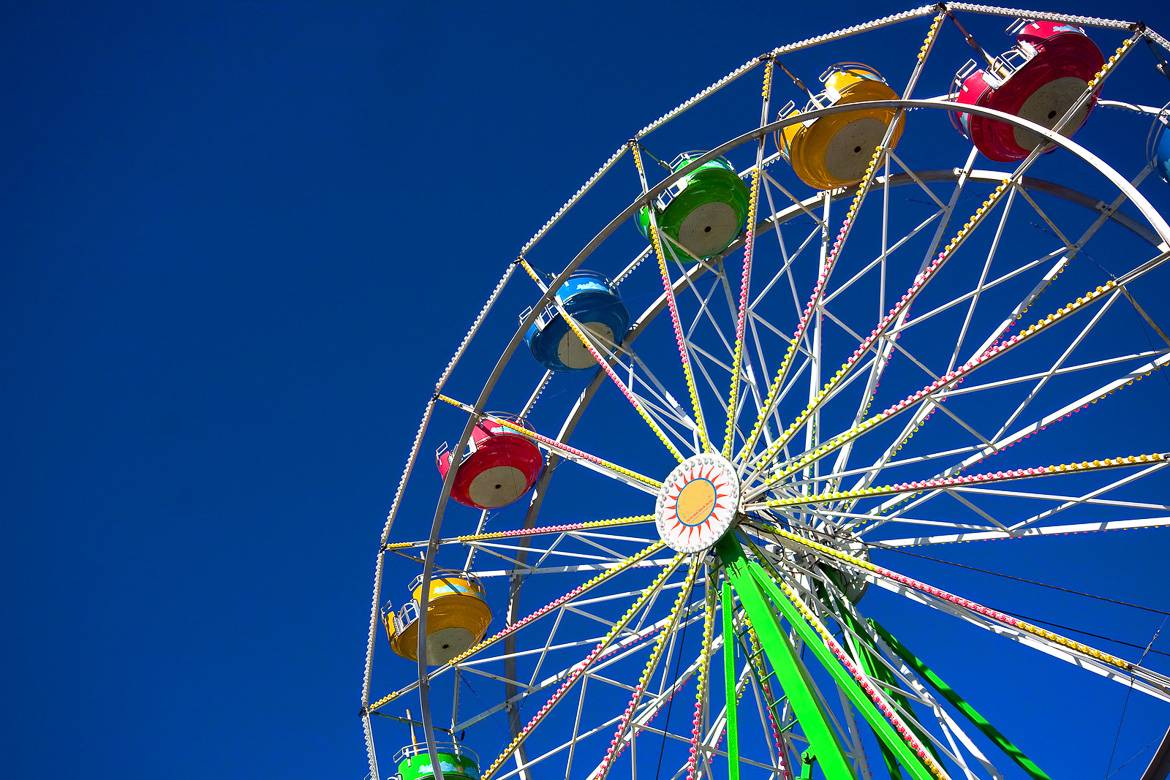
Families can have a perfect day at the Foire du Trône, a beloved Parisian fair. In the 1100s, the Rue du Faubourg Saint-Antoine became the site of a centuries-old marketplace, where pastries–including the bazaar’s famous gingerbread–were sold and acrobats amused the masses. Over the years, the fair relocated and expanded. Today, its home is in the Bois de Vincennes, on the lawn known colloquially as the Reuilly. It delights guests with a Ferris wheel, thrill rides, carnival games, and cutting-edge entertainment.
The fair runs for two months from April to June between the hours of noon and midnight (Saturday hours extend to 1:00 a.m.). Even better than the festival’s lengthy duration is the free admission! Keep in mind that food, rides, and other attractions may be priced individually. The fairgrounds are easily accessed via Porte Dorée Station on the Métro 8 line. Our Parisian furnished rentals will have you ready to plan your festival-going experience in no time.
Nuit des Musées
For one night each year, Paris museums open their doors to those who seek a break from the ordinary. The overnight hours underscore a different mood for all of the work on display, and some works are illuminated by special lighting. Special events are held in celebration, and museum halls are filled until the clock strikes midnight. This magical evening is known as Nuit des Musées.
Galleries across the whole city participate, including some titans of the museum world: Musée d’Art Moderne de la Ville de Paris, Château de Versailles,and the Louvre. Given the free admission (with the exception of certain exhibits), you can expect long lines. Acquaint yourself with a map of museums and nearby Métro stations to make the most of your time: Nuit des Musées only lasts from 6:00 p.m. to midnight for one night in May.
Fête de la Musique
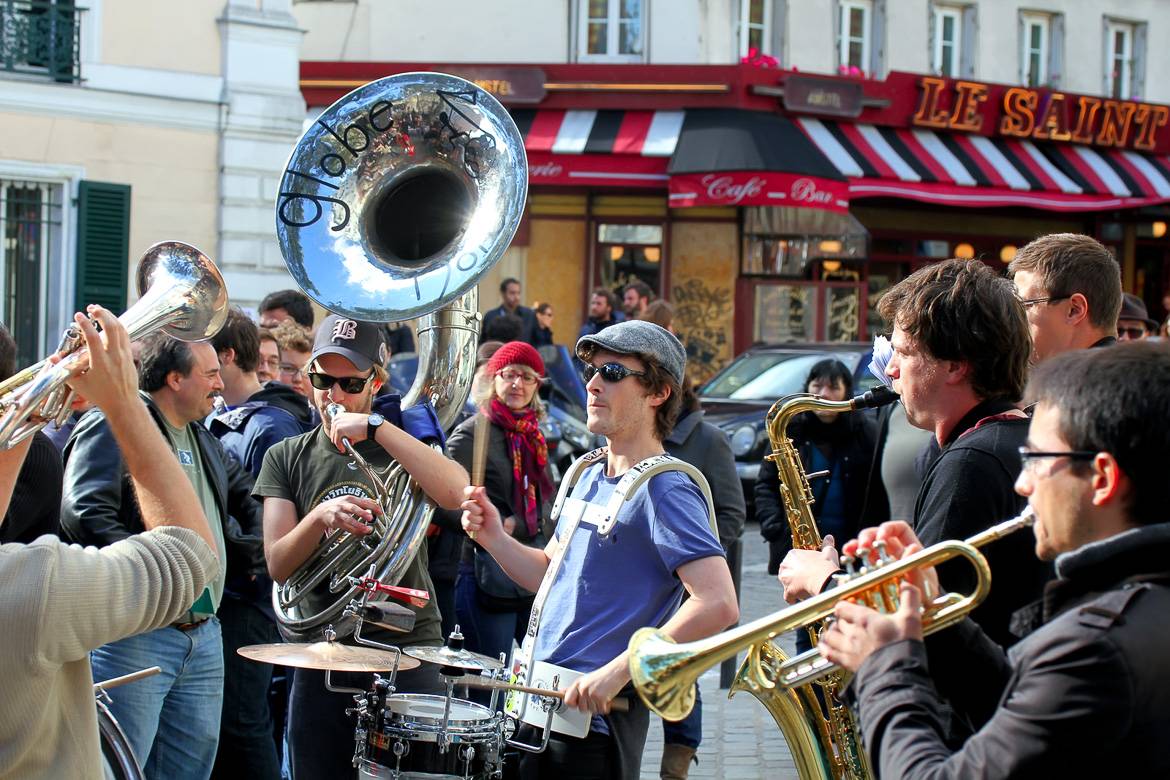
Music lovers, take note: the Fête de la Musique will have you singing along. Held each year on June 21, the festival celebrates music all across France. Its goals are simple: to promote the talents of musicians, professional or amateur, and to sponsor free concerts for the enjoyment of the people. All different genres of music are celebrated and everyone is encouraged to listen, whether in their homes, on the Métro, or outdoors.
The 24-hour extravaganza takes advantage of the extra daylight on June 21, the summer solstice for the Northern Hemisphere. Since the inaugural Fête de la Musique in 1982, the event has expanded beyond Paris to cities across Europe, the Americas, Asia, Australia, Africa, and the Middle East. It’s the perfect excuse to wander around the French capital and discover rich melodies and the power of music, a language beyond cultural boundaries.
LGBTQ Pride Parade
The Paris Pride Parade is France’s salute to a global celebration of LGBTQ people. Members of the community, their families, friends, and allies gather in the city streets for a colorful display of floats, balloons, and many rainbow flags. The parade recognizes the cultural contributions and progress of the LGBTQ community, including legalized same-sex marriage in France, and brings awareness to progress yet to be made.
The 2014 parade route began at 2:00 p.m. at the end of June at the Place Edmond Rostand along the Boulevard Saint-Michel. It then journeyed to the Place de la Bastille and terminated at the Place de la Republique at 4:00 p.m. This is the general area of the parade, but the route is subject to change from year to year. Watching the parade is free, and celebrations continue after the procession. From 4:00 p.m. to 9:00 p.m., revelers join an after-party at the parade’s finish line. The Marais district, known for its large LGBTQ society, also sponsors many Pride-related events at its various clubs and restaurants into the evening. Find out more about Le Marais here.
Bastille Day fireworks & military parade
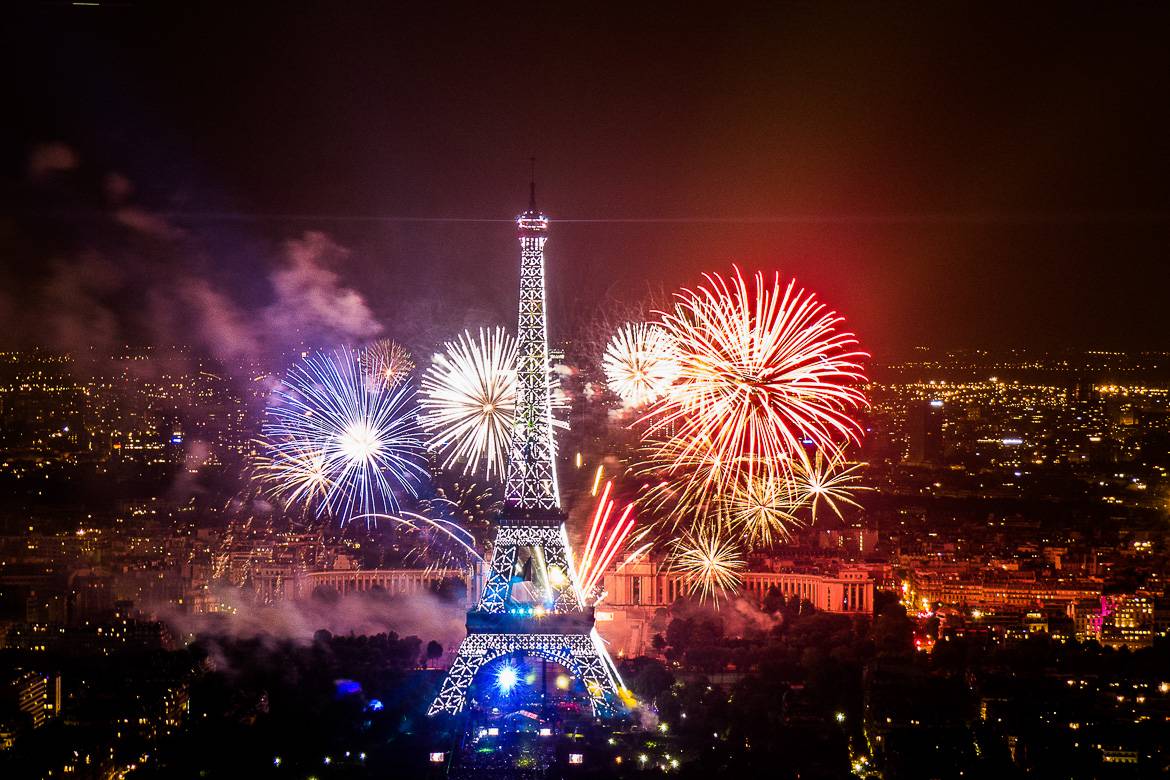
There is no better place to commemorate the French National Day than in the heart of Paris. Bastille Day is the July 14th anniversary of the storming of the Bastille prison, which was widely considered to be the start of the French Revolution. Early in the day, watch the oldest continual military parade in the world: the Bastille Day Military Parade. Each year, thousands of soldiers from numerous regiments (some international) march down the Champs-Elysées at the Arc de Triomphe until they reach the Place de la Concorde. There, the current French president, his associates, and ambassadors from around the globe welcome the soldiers. The parade begins around 10:45 and lasts until noon, with a flyover before the cavalcade commences.
Bastille Day is known for its quirky traditions, including firemen’s balls throughout the city (firehouses open their doors for demonstrations and music; entrance fees or donations applicable) and the Bal du 14 juillet gala (guests dress in elaborate costumes and dance at the Bastille prison site; usually held on July 13 despite its name).
To finish the night, witness an incredible Bastille Day fireworks display with the Eiffel Tower in the center. Join the crowds on the Champ de Mars (free, and crowded!) or book a reservation on a cruise down the Seine (not free, but breathable and romantic) for a view of the spectacle. Enjoy a lovely finish to a day of merriment.
Paris Plages
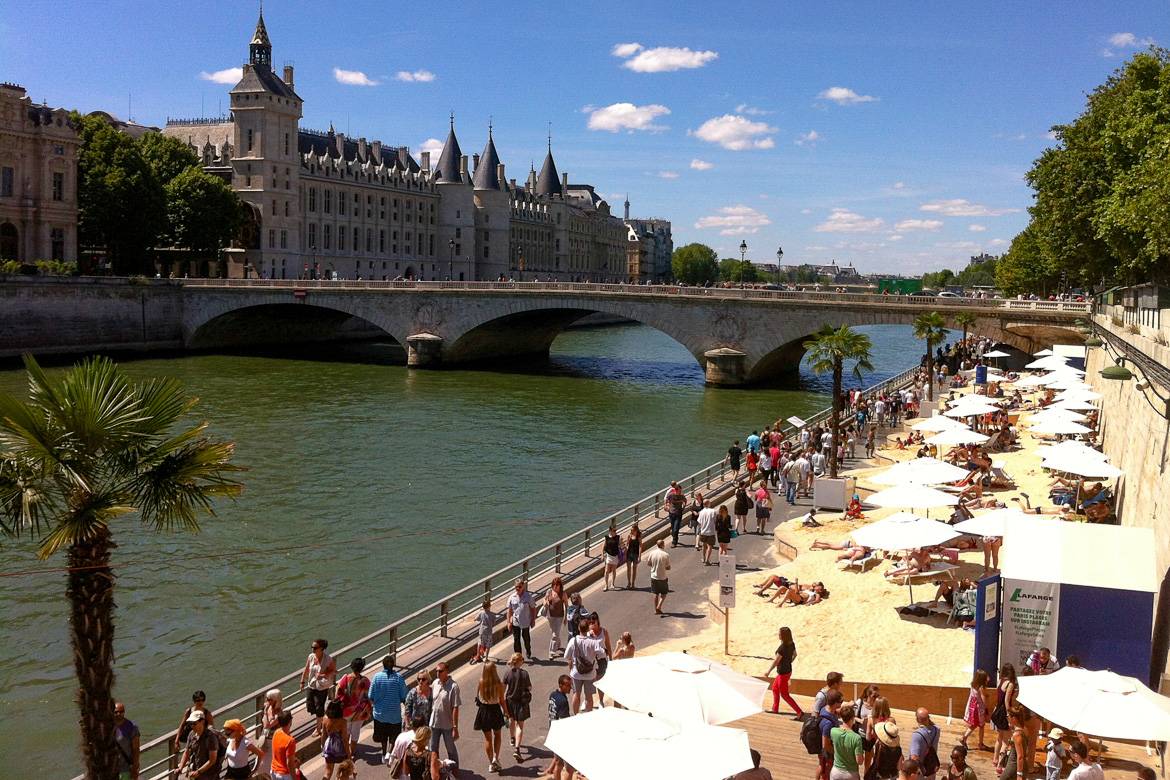
Bring the beaches of southern France to Paris! It may not be exactly the same, but the Paris Plages is close enough. Sunbathing along the Seine is now possible thanks to the program’s artificial beaches. You’ll also find ice cream vendors, rollerblading, and tai-chi at the original site, which stretches from the Louvre to the Pont de Sully at the Rive Droite (the Right Bank of the Seine). A second spot on the Rive Gauche (Left Bank) of the Seine, extends from the Rotonde de Ledoux to the Magasins Généraux near the Bassin de la Villette. At this spot, you’ll discover more dynamic activities like kayaking, boating, and other water-based sports.
Originally an installation for Parisians who were unable to escape the city during the summer, Paris Plages is now popular and well-received by locals and tourists alike. It runs from late July into late August, and beaches are open from 8:00 a.m. until midnight. Relaxing is free, but add-ons (including the water sports complex at the Bassin de la Villette location) will cost a few Euros. In contrast to most French beaches, topless sunbathing is prohibited, as is swimming in the Seine. Of course, if you’re inspired to take a trip to the south of the France, we can help.
Journées du Patrimoine
In 1983, the French Ministry of Culture sponsored a set of days during which exclusive historical monuments opened their doors to the public. It was an excellent idea, and the annual program was officially established in 1991. The mission has not changed: government offices (such as Paris City Hall), privately-owned estates, and other historical areas are a few sites that participate in this event.
Dates change annually, but the Journées du Patrimoine is usually organized on a weekend in mid- to late-September. Most of the locations are free to enter (with certain exceptions) and are located all across Paris. Queues will likely be long, so be mindful as you plan your weekend visits. We recommend a backstage tour of the Moulin Rouge, if available, for a taste of legendary French culture.
Nuit Blanche
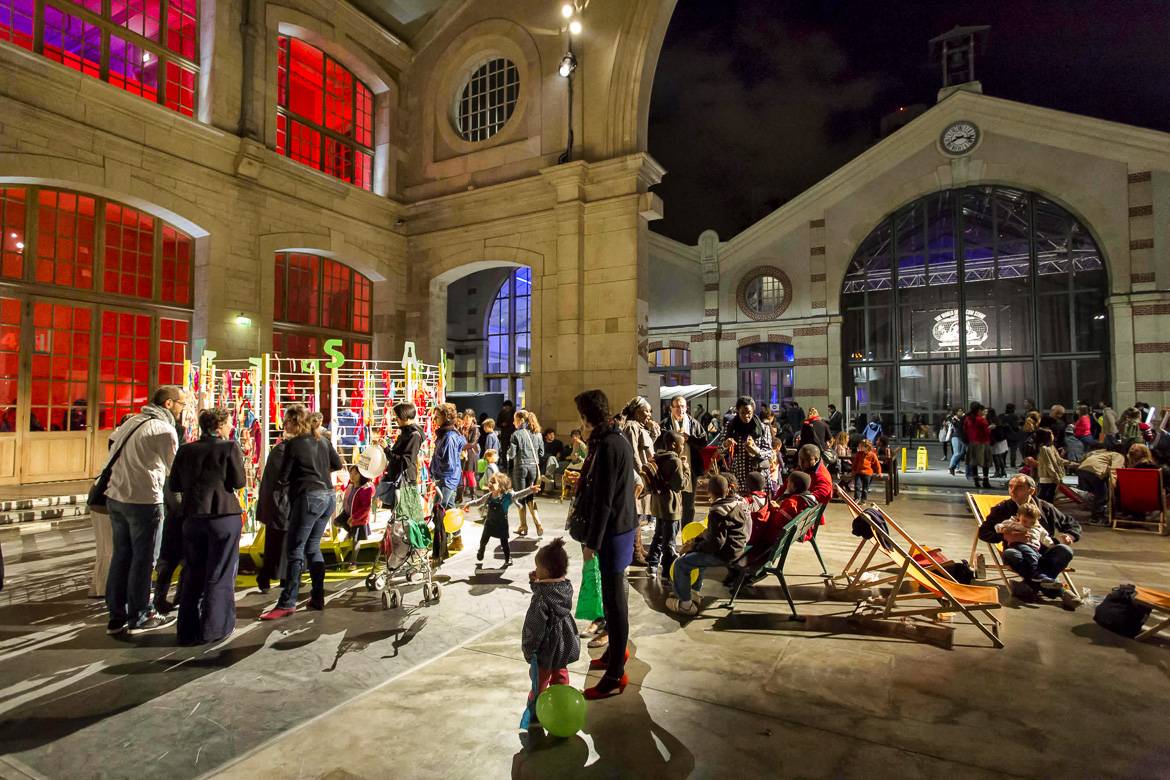
If you thought the Nuit des Musées was magical, then the Nuit Blanche will be a wonder to behold. Just as the leaves are beginning to turn to hues of red and gold, Paris transforms into an interactive art exhibit for one night. Each year, alternating artistic directors helm magnificent installations in different neighborhoods of the city where natives and visitors can interact with art, music, and theatre in organic and unexpected ways. Art galleries also stay open after hours.
Nuit Blanche takes place on the first Saturday of October between the hours of 7:00 p.m. and 7:00 a.m. Most of the exhibitions are free of charge, but certain ones (especially inside museums) may cost extra. From nightfall until daybreak, Paris will be illuminated in ways you’ve never seen! A Paris bed and breakfast would make a perfectly picturesque accommodation as you explore Nuit Blanche and Paris in autumn, don’t you think?
Holiday season in Paris
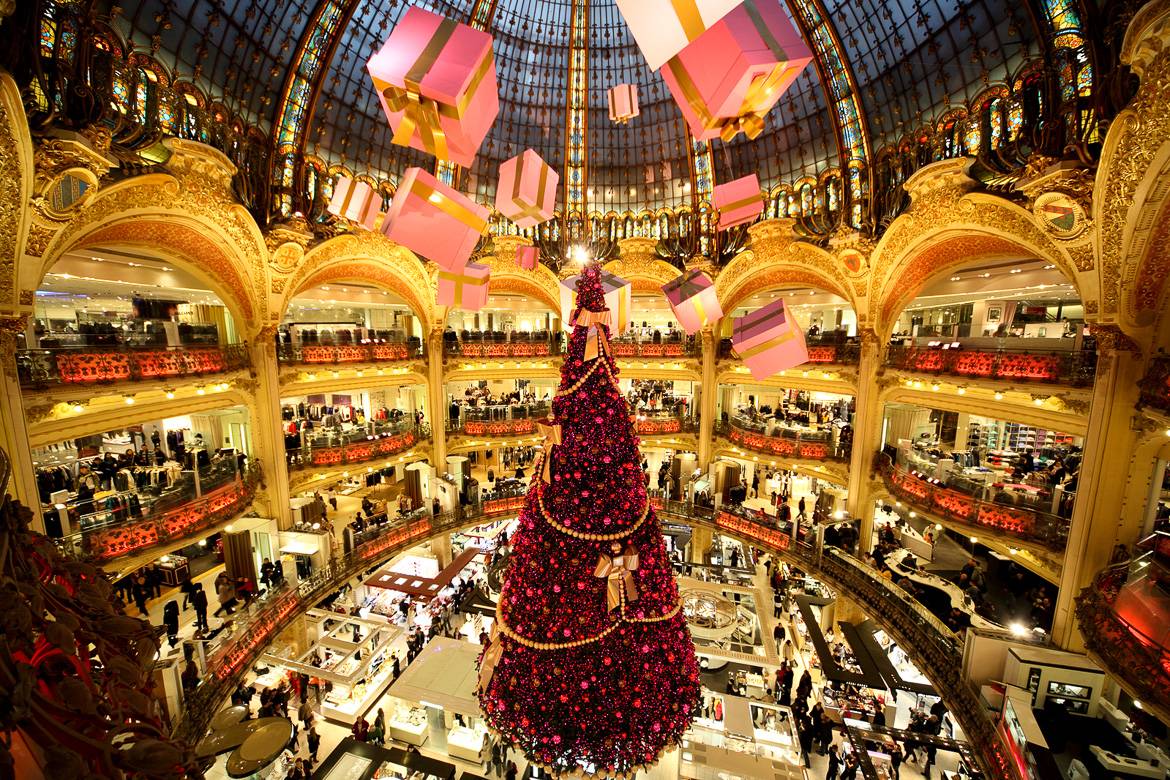
Christmas is a beautiful time to spend in the City of Lights, and Paris certainly takes its nickname seriously during December. Christmas Markets can be found in nearly every corner of the city, from the largest on the Champs-Élysées, to the most diverse at La Défense, to the most quaint in Montmarte. You’ll find precious trinkets, wintry treats like gingerbread and mulled wine, garlands, stringed lights, and perhaps even Santa Claus himself. The Champs-Élysées becomes the site of another show: Christmas lights adorn trees and glimmer along the boulevard, and projectors flood the avenue with even more light from the Arc de Triomphe to the Place de la Concorde. You can see the lights from late November until the first week of January.
Like the displays of Macy’s in New York City and Harrods in London, the Galeries Lafayette on Boulevard Haussmann matches their luxurious merchandise with lush window decorations. 2013’s theme, “La Belle & La Bête,” embellished the department store’s exterior with roses, candles, and other romantic touches. Step inside the Galeries to gape at the gigantic Christmas tree under the store’s lavish dome while you’re there.
Want to practice your Biellmann spins or double toe loops? Multiple ice skating rinks are set up in Paris just for the season. You can test the crowds at Patinoire de L’Hôtel de Ville, the city’s most popular rink in front of City Hall, where a small space is reserved for kids and amateurs. You can also visit the Patinoire de Cinq Continents on the Champs-Élysées while you take a break from Christmas shopping. A third option, Trocadéro, is also recommended for its views of the Eiffel Tower. All of the rinks run on their own schedules in terms of dates and times, but most are free to enter and charge only a handful of Euros for skate rentals. Add a vacation rental to your holiday to-do list as you take advantage of Christmastime in Paris.
What Parisian traditions are your favorites?

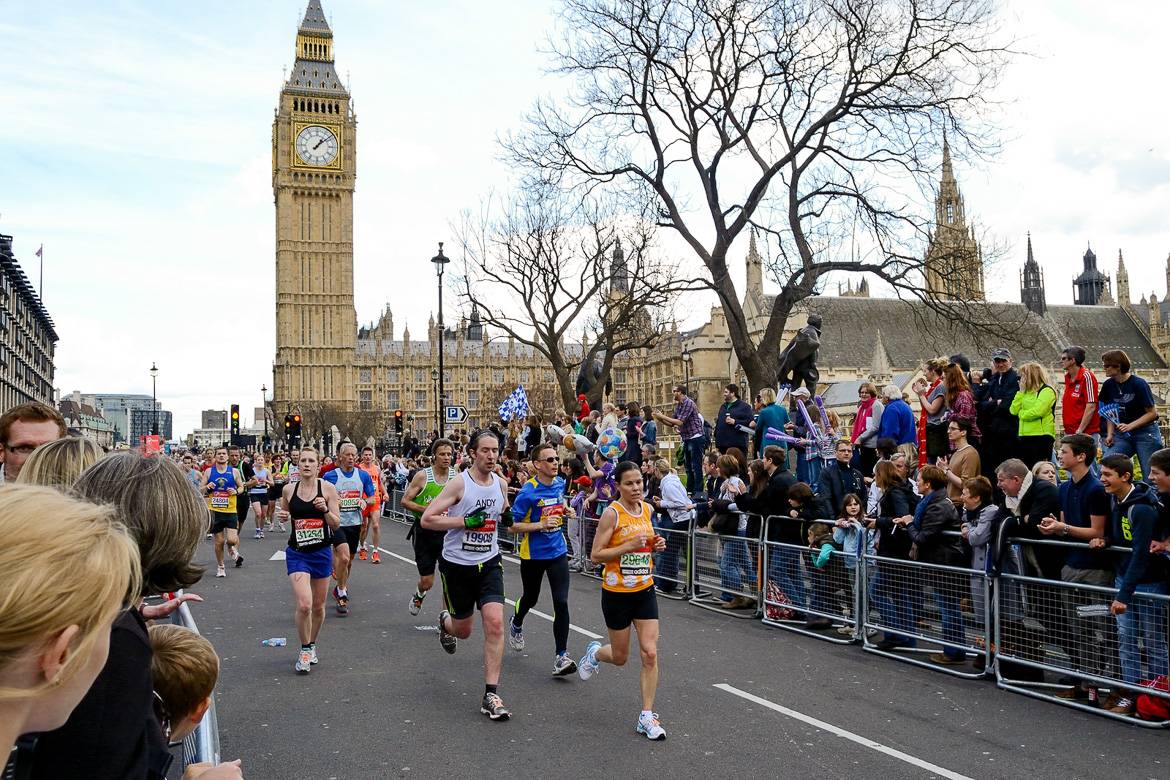
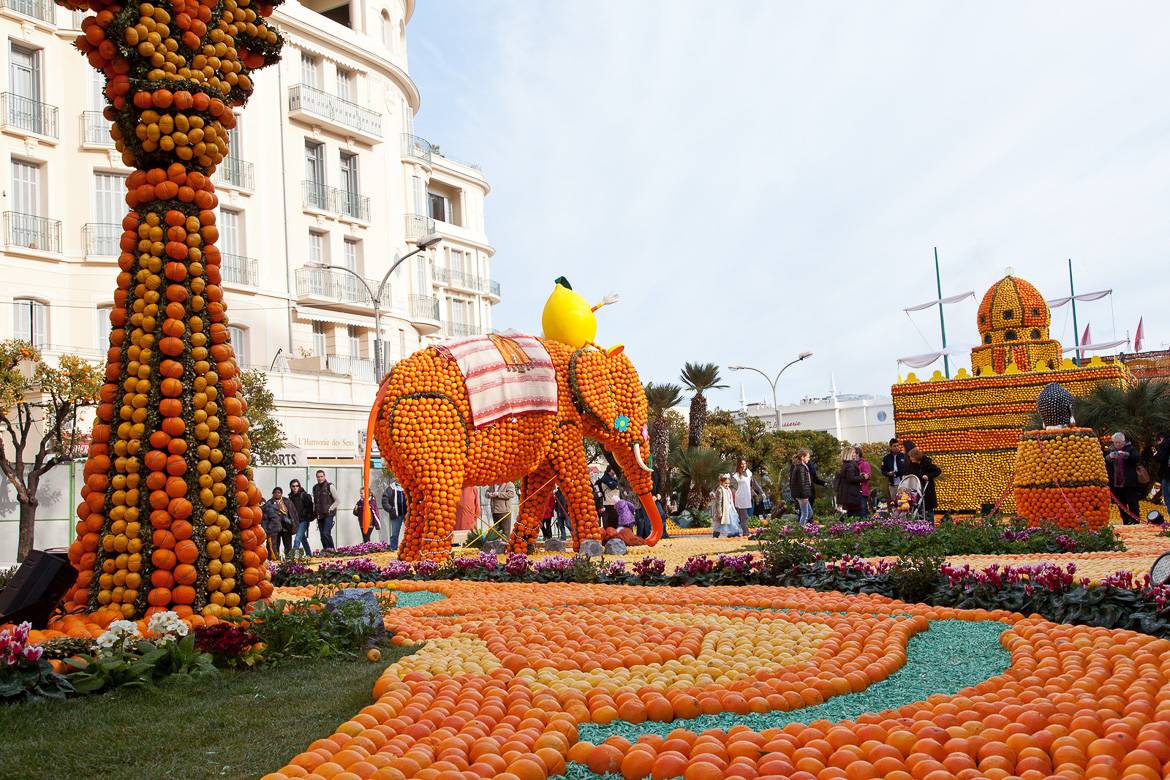
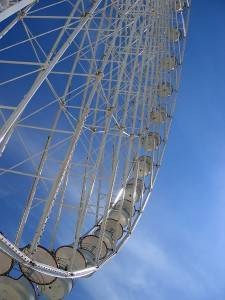
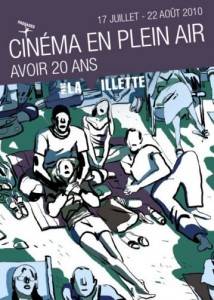
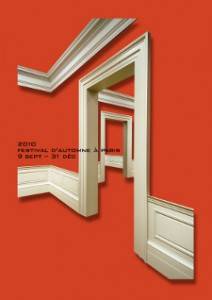
Leave a Reply